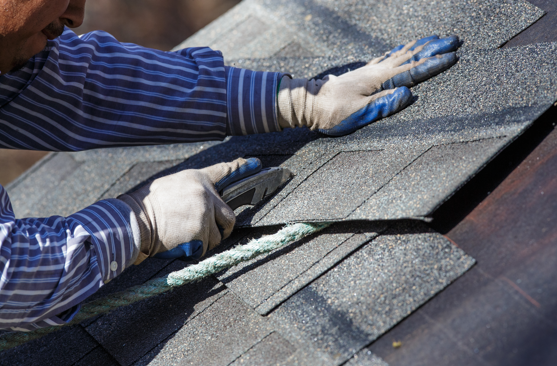Buying a new home is an exciting, and sometimes overwhelming, process. When you have searched through countless number of homes on the market, and after viewing your share of duds, finally finding the perfect home can be a great relief. But, before you sign on the dotted line, there are a few things you should consider - the most important of which might be the condition of the roof.
A roof replacement can easily cost more money than you have in your savings account, especially after placing a down payment before moving in. So making sure the home you buy has a sturdy roof will be in your very best interest. Hire an impeccable home inspector with a deep well of qualified references to ensure you are getting what you pay for.
Here are some key things to look for in a roof when buying a new home.

Loose or missing shingles
While a couple of loose or missing shingles is not necessarily a big deal, more than a few may be a sign of a chronic problem related to the craftsmanship of the roof builder. Shingles that are not installed on the roof in a high-quality way will most likely expose the underlayment to the elements, leading to the possibility of water damage.
Also look at the shingles themselves. Is most of the asphalt still on the shingle? Or, are there dark spots where significant amounts of asphalt have worn away? If you see more shingles in this state than not, your roof may no longer be able to protect your home from the elements.
Improperly sealed or worn flashing
Roofers install flashing anywhere structures protrude from the roof such as venting or chimneys, or where peaks and valleys meet along the roof structure. Over time, flashing may wear down and require repair or replacement. If the previous homeowner neglects these areas, the roof can become vulnerableleaks, and subsequent water damage inside the home. While you can repair or replace the flashing before moving in, you will also need to have the interior inspected for damage.
Interior inspection
Often pinhole leaks form from tiny punctures in the roof when it is constructed, or during repairs over time. The easiest way to inspect your roof for these small holes is through attic access. Shine a flashlight over the underside of your roof to look for any pinpoints of light. You may find that some of these pinholes have grown into more massive holes allowing water to seep in. If you see damaged areas like these, inspecting the surrounding area for significant damage is a must before signing off on the purchase of this home.
Look for dark spots around skylights or rafters or along the undersurface of the roof. These could be a sign of previous water damage that you will need to address before purchasing your home.
Debris buildup
Clogged gutters are a common problem among homes. But if the problem continues to be ignored, leaf and debris buildup can occur on the roof itself. When this happens, moisture becomes trapped as the accumulation begins decomposing on the roof. Along with it, components of the roof start to decay, which creates soft spots for water to then seep through. Check the exterior of the roof for patches of buildup like these.
Have your inspector sweep these areas away to examine the integrity of the roof underneath. If the shingles or other roof surface appear to be unaffected, you can rest easy knowing you only need to have the gutters cleaned. On the other hand, if that area of the roof surface is compromised, you will have to have it further inspected for water damage inside as well.

Follow us